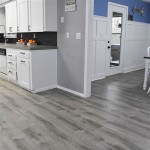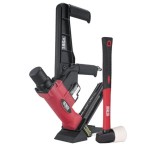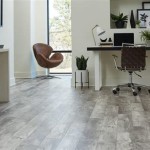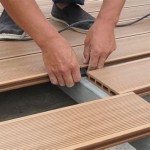Hawaiian Koa Wood Flooring: A Legacy of Warmth and Beauty
Koa wood, derived from the Acacia koa tree native to the Hawaiian Islands, is a highly prized material renowned for its exceptional beauty, durability, and unique grain patterns. Its rich history and cultural significance, coupled with its inherent physical properties, make Koa wood flooring a sought-after choice for discerning homeowners and designers aiming to imbue their spaces with a touch of Hawaiian elegance and lasting value.
The Acacia koa tree thrives in the diverse ecosystems of the Hawaiian islands, from the coastal lowlands to the higher elevation forests. Its adaptability allows it to reach impressive heights and diameters, providing a substantial yield of valuable timber. Sustainable harvesting practices are crucial to ensure the long-term availability of this precious resource and to maintain the ecological integrity of the Hawaiian forests.
Koa wood stands out due to its remarkable color variations, ranging from light golden hues to deep reddish-brown tones. These variations arise from the concentration of extractives within the wood, influenced by factors such as the tree’s age, location, and growing conditions. The grain patterns are equally captivating, exhibiting curly, fiddleback, and straight grain formations. These unique characteristics contribute to the distinct visual appeal of each Koa wood plank, making every floor a one-of-a-kind masterpiece.
Beyond its aesthetic allure, Koa wood possesses excellent physical properties that make it well-suited for flooring applications. It is a relatively hard and dense wood, providing resistance to wear and tear, denting, and scratching. Its dimensional stability minimizes the likelihood of warping, cupping, or shrinking, even under fluctuating humidity levels. Proper installation and maintenance are essential to preserve the longevity and beauty of Koa wood flooring.
The use of Koa wood in Hawaiian culture dates back centuries. Ancient Hawaiians utilized the wood for constructing canoes, weapons, and houses, recognizing its strength and durability. In modern times, Koa is used in the creation of fine furniture, musical instruments, and decorative objects, showcasing its versatility and enduring appeal. Koa wood flooring brings a piece of Hawaiian heritage into the home, creating a warm and inviting atmosphere.
The Distinctive Aesthetic of Koa Wood Flooring
The unparalleled aesthetic quality of Koa wood flooring represents its most prominent appeal. The interplay of color and grain elevates any space, adding a touch of natural sophistication and tropical warmth. The spectrum of golden browns and reddish hues creates a visually dynamic surface that complements a diverse range of interior design styles, from traditional to contemporary.
The unique grain patterns in Koa wood are a direct reflection of the tree's growth history. Curly Koa, also known as "tiger Koa," displays undulating, wavy lines that resemble the stripes of a tiger. This remarkable pattern arises from the compression and tension within the tree as it grows, resulting in a stunning visual effect. Fiddleback Koa, characterized by tight, parallel lines running perpendicular to the wood grain, is another highly sought-after pattern. Straight-grained Koa offers a more subtle yet elegant appearance, showcasing the natural beauty of the wood fibers. The selection of grain patterns can significantly impact the overall look and feel of the floor, allowing for customization based on individual preferences.
The natural color variations within Koa wood create a sense of depth and visual interest. Lighter planks can brighten up a room, while darker planks can impart a sense of richness and warmth. These variations are not considered imperfections but rather inherent characteristics that enhance the unique character of the wood. Careful placement of planks with varying colors and grain patterns can create a harmonious and visually appealing floor.
The finish applied to Koa wood flooring plays a crucial role in enhancing its aesthetic appeal and protecting it from wear and tear. A clear finish allows the natural color and grain of the wood to shine through, while a stained finish can alter the color to complement a specific design scheme. The choice of finish depends on the desired level of gloss, durability, and resistance to scratches and stains. Regular maintenance, including cleaning and polishing, is essential to preserve the beauty and luster of the finish.
Durability and Longevity of Koa Wood Flooring
Koa wood's inherent physical properties contribute significantly to its durability and longevity as a flooring material. Its hardness and density provide resistance to everyday wear and tear, making it suitable for high-traffic areas. Its dimensional stability minimizes movement and warping, ensuring that the floor remains flat and even for years to come. Proper installation and preventative maintenance are key to maximizing the lifespan of Koa wood flooring.
The Janka hardness scale measures the resistance of wood to denting and wear. Koa wood typically scores between 1180 and 1570 on the Janka scale, indicating that it is a relatively hard and durable wood. This hardness allows it to withstand the impact of footsteps, furniture, and pet claws without sustaining significant damage. However, it is important to note that even hard woods can be scratched or dented if subjected to excessive force or sharp objects. Using rugs in high-traffic areas and felt pads under furniture can help protect the floor from scratches and dents.
Dimensional stability refers to the ability of wood to resist changes in size and shape due to fluctuations in humidity. Koa wood exhibits good dimensional stability, meaning that it is less likely to warp, cup, or shrink compared to woods with lower stability. This characteristic is particularly important in environments with high humidity or significant temperature variations. Maintaining a consistent indoor climate through proper ventilation and humidity control can further enhance the stability of Koa wood flooring.
Proper installation is crucial for ensuring the long-term performance of Koa wood flooring. The subfloor must be level, clean, and dry before installation. The planks should be properly acclimated to the indoor environment to minimize expansion and contraction after installation. Using high-quality adhesives and fasteners is essential for securing the planks to the subfloor. Hiring a skilled and experienced flooring installer is recommended to ensure that the job is done correctly.
Sustainability and Ethical Sourcing of Koa Wood
Concerns regarding deforestation and environmental degradation have increased the focus on sustainable forestry practices and ethical sourcing of wood products. Purchasing Koa wood from reputable suppliers who adhere to sustainable harvesting practices is essential for protecting the Hawaiian forests and ensuring the long-term availability of this valuable resource. Supporting companies that prioritize environmental responsibility helps promote responsible forest management and conservation efforts.
Sustainable harvesting practices involve managing forests in a way that maintains their ecological integrity and provides a continuous supply of timber without depleting the resource. This includes selective logging, where only mature trees are harvested, allowing younger trees to grow and regenerate the forest. Reforestation efforts, such as planting new trees to replace those that have been harvested, are also crucial for ensuring the long-term sustainability of the forest. Strict regulations and monitoring mechanisms are necessary to prevent illegal logging and unsustainable harvesting practices.
Certification programs, such as the Forest Stewardship Council (FSC), provide assurance that wood products come from sustainably managed forests. FSC certification requires that forests be managed in accordance with strict environmental and social standards, ensuring that biodiversity is protected, water resources are preserved, and workers' rights are respected. Looking for FSC-certified Koa wood flooring can help consumers make informed choices and support responsible forest management practices.
Ethical sourcing of Koa wood involves ensuring that the wood is harvested and processed in a way that respects the rights of workers and local communities. This includes providing fair wages and safe working conditions for forestry workers, as well as respecting the traditional knowledge and rights of indigenous communities who depend on the forests for their livelihoods. Transparency and traceability throughout the supply chain are essential for ensuring that Koa wood is ethically sourced.
Choosing Koa wood flooring represents an investment in beauty, durability, and sustainability. By selecting responsibly sourced Koa, consumers can contribute to the preservation of Hawaiian forests and support ethical forestry practices. The unique character and lasting value of Koa wood flooring make it a timeless addition to any home, creating a warm and inviting space that celebrates the natural beauty of the Hawaiian Islands.

Hawaiian Koa Hawaii Flooring Solutions

Koa Lumber Hearne Hardwoods

Pergo Outlast Hawaiian King Koa 12 Mm T X 5 2 In W Waterproof Laminate Wood Flooring 13 7 Sqft Case Lf000998 The Home Depot

Koa Lumber Hearne Hardwoods

Biz Shared Info About Waterproof Flooring Hawaii Real Estate A Complete Listing Of Homes On Oahu Honolulu

Msi Hawaiian Koa 6 Mil X 7 In W 48 L Waterproof Lock Luxury Vinyl Plank Flooring 19 Sq Ft Case Vtrhdhawkoa7x48 The Home Depot

Add Rich Warm Tones To Home Abbey Carpet Floor Hawaii Renovation

Pergo Take Home Sample Hawaiian King Koa Laminate Flooring 5 In X 7 Pe 122712 The Depot

Hawaiian Koa Hawaii Flooring Solutions

Hawaiian Koa Hawaii Flooring Solutions








